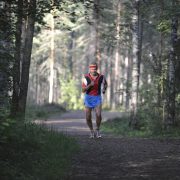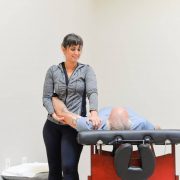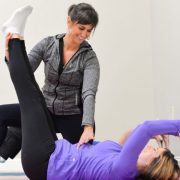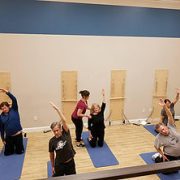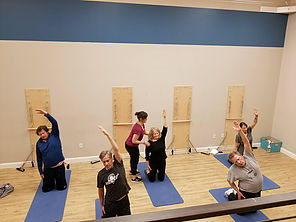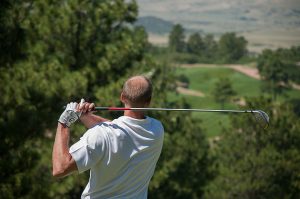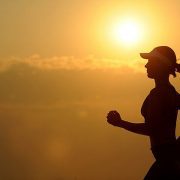Is Running Bad for Your Knees when you’re Over 50?
Is Running Bad for Your Knees when you’re Over 50?
This is a question we get asked a lot — especially by patients at our specialized physical therapy practice in Portsmouth, New Hampshire — who are getting older and worried that they won’t be able to keep running into their 50s and 60’s.
The short answer? No!
If you experience knee pain when you run, it’s not that you’ve “aged out” of the sport! It’s probably just a biomechanical issue that can be fixed with proper education and strengthening (best offered by a specialist physical therapist).
In fact, research supports that running may actually be GOOD for your knees!
Here are some factors that could be responsible for knee pain when you run:
1) Poor ankle mobility
Ankle mobility affects the way force hits your foot, which can in turn impact your knee. According to Trail Runner Magazine, “if your ankle can’t move adequately, then excess forces are shifted up to the knee. The knee may be forced to flex, and/or rotate, and/or tilt more than it should. This may result in loads that the tissues of the knee can’t handle.”
A physical therapist can help you improve ankle mobility in order to prevent long term damage to the joints, tendons, and ligaments of your knees. This might be especially important for you if you’ve ever sprained or twisted an ankle in the past!
2) Weakness
There’s a widely perpetuated myth out there that runners don’t need to strength train. That’s simply not true! Adding strength training to your running regimen makes it way less likely that you’ll suffer an injury. When it comes to protecting your knees, developing strong lower limb muscles is critical. The hamstring and quadriceps groups play a crucial role in stabilizing the patella, otherwise known as the kneecap. Running is an extremely repetitive action and consequently requires durability and endurance from your joints — something that is lost quickly when you neglect strength training.
3) Unstable core
It may seem like running is all in the legs, but in reality, every physical action begins at the core. You derive all your power, speed, and stamina from your core muscles, and if they are weak, all your joints suffer — especially your knees. A stable core is key for maintaining balance and rhythm. It also keeps your weight distributed between your legs and prevents undue stress from resting on your knees.
Our favorite way to improve core strength is Pilates! If you are a runner but think you could benefit from a stronger core (let’s be honest, we all could), consider giving it a try — for FREE.
4) Running form
It doesn’t matter if you’re a marathon runner or an occasional jogger — running form is important. It determines where and how the impact of every step is distributed throughout your body. If your body mechanics are compromised — for instance, you’re dragging your feet or running with your shoulders tense and shrugged — you’re more likely to suffer from chronic knee pain, or even experience a serious injury. Work with a movement specialist – like the PT’s in our office – to analyze your form and help you be more efficient when you run.
Running is good for you at any age, if you do it right!
Research shows running can actually slow knee arthritis. According to an article published by Outside Online, “animal models show that exercise promotes cartilage thickening and protects its stretchy properties… instead of wearing down your bearings, running may grease them. That’s key, because cartilage thinning and the loss of elasticity are both prominent causes of osteoarthritis.”
Want to make sure you’re running right? Get in touch!
If you are local to the Seacoast region and considering physical therapy in Portsmouth, NH – you can schedule a FREE Discovery Session if you have chronic knee pain (or any type of pain) to talk about what you’re dealing with and figure out the course of action that works best for you.
You’ll get the opportunity to tell one of my specialists everything that’s been going on with you, and determine for yourself if we’re the best people to help you. It’s a completely free, no-obligation appointment that will give you all the information you need to make the BEST decision for YOUR health – whether that’s working with us or not!
Looking for more information on Knee Pain? – Download our free guide “7 Ways to Stop Knee Pain” HERE.
Dr. Carrie Jose, Physical Therapist and Pilates expert, owns CJ Physical Therapy & Pilates in Portsmouth and writes for Seacoast Media Group. To get in touch, email her at [email protected].

